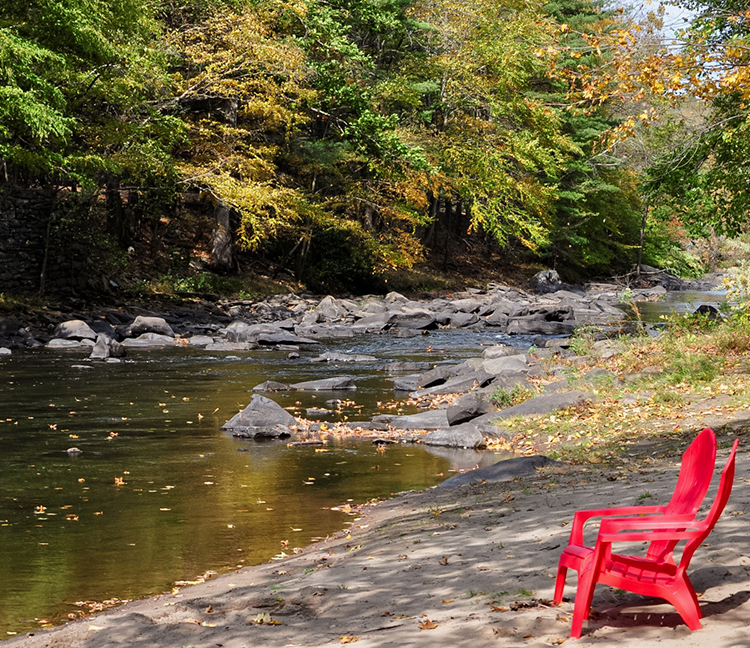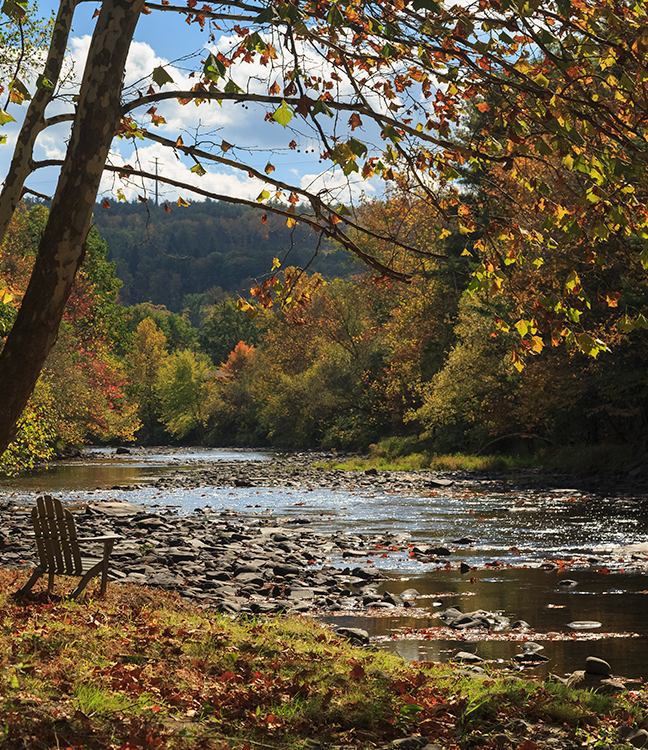- summer
- winter
We are a historic property and do not have an elevator. Should you need a more accessible room on the lower floor, please call the hotel directly.
Farm-to-Table Dining
Exclusive Packages
Riverbank
Gift Shop
Daily Activity Schedule
Lake Region Fitness Day Passes
Summer House
Manicured Gardens
Individually Appointed
Rooms & Suites
Grant's Woods

Eager to experience all that the Delaware Highlands has to offer? Request access to our free online guide to the area to get the most out of your upcoming getaway.

The Settlers Inn is a proud member of the Delaware Highlands Lodging Program. Each reservation directly supports the protection and preservation of our healthy and beautiful lands, clean waters, and abundant outdoor recreation opportunities.
The Program works as follows: A portion of your stay is contributed directly to the Conservancy to support its conservation mission and assure that all the special places, scenic beauty, and outdoor recreational opportunities that bring tourists to the Upper Delaware River region are protected now and every time they visit in the future. Guests may opt out, but the successful launch of the program shows that very few have.
The Conservancy works in partnership with landowners and communities to protect the healthy lands, clean waters, and quality of life in the Upper Delaware River region. The Conservancy focuses as well on supporting locally sustainable economies.
For more information on the Green Lodging Partnership Program, please visit delawarehighlands.org.
We are a historic property and do not have an elevator. Should you need a more accessible room on the lower floor, please call the hotel directly.
Room rates vary depending upon type and date of stay.
Taxes:
Fees:
Settler Cares Donation
A $1 charitable donation is added to each guest reservation to support our non-profit, Settlers Cares. The Settlers Cares Foundation was created to help employees or affiliates who are facing financial hardship due to unexpected life events. The goal is to provide short-term, emergency support to employees or eligible dependents.
Certain rooms are dog friendly. Additional fees apply. Please call to inquire about a dog friendly room.
Streaming services are offered in each room for television viewing. Cable TV is not offered. Free streaming applications offered include Tubi and Zeam. Please bring your passwords for paid subscriptions that can be used to sign into other applications, including Netflix, Hulu, and ESPN. There are limited offerings for sports and live television on the free streaming applications.
Deposit Policy:
Cancellation Policy:
No. We are a non-smoking facility.
Rates vary by season. For information on rates, check out our hotel rooms pages to see rates during your desired dates of stay, or view our specials page to see our upcoming promotions.
Check-in: 3pm - 9pm
Check-out: 11am
If you are arriving later, please call for late check-in instructions.
Settlers Hospitality is a hospitality management group owned and operated in Hawley, PA.
Each room at The Settlers Inn is unique, but we do offer standard King and standard Queen rooms, along with deluxe rooms and suites. Review each hotel room for more information.
Yes – our Hawley, PA, hotel includes activities at the hotel and our sister properties, Ledges Hotel and Silver Birches resort. The resort fee includes free shuttle access for events that are off-site at our sister properties, as well as tastings and wellness activities at the The Settlers Inn.
We’re always looking for dedicated individuals with a passion for hospitality to join the team. View our employment opportunities and apply using the link below.